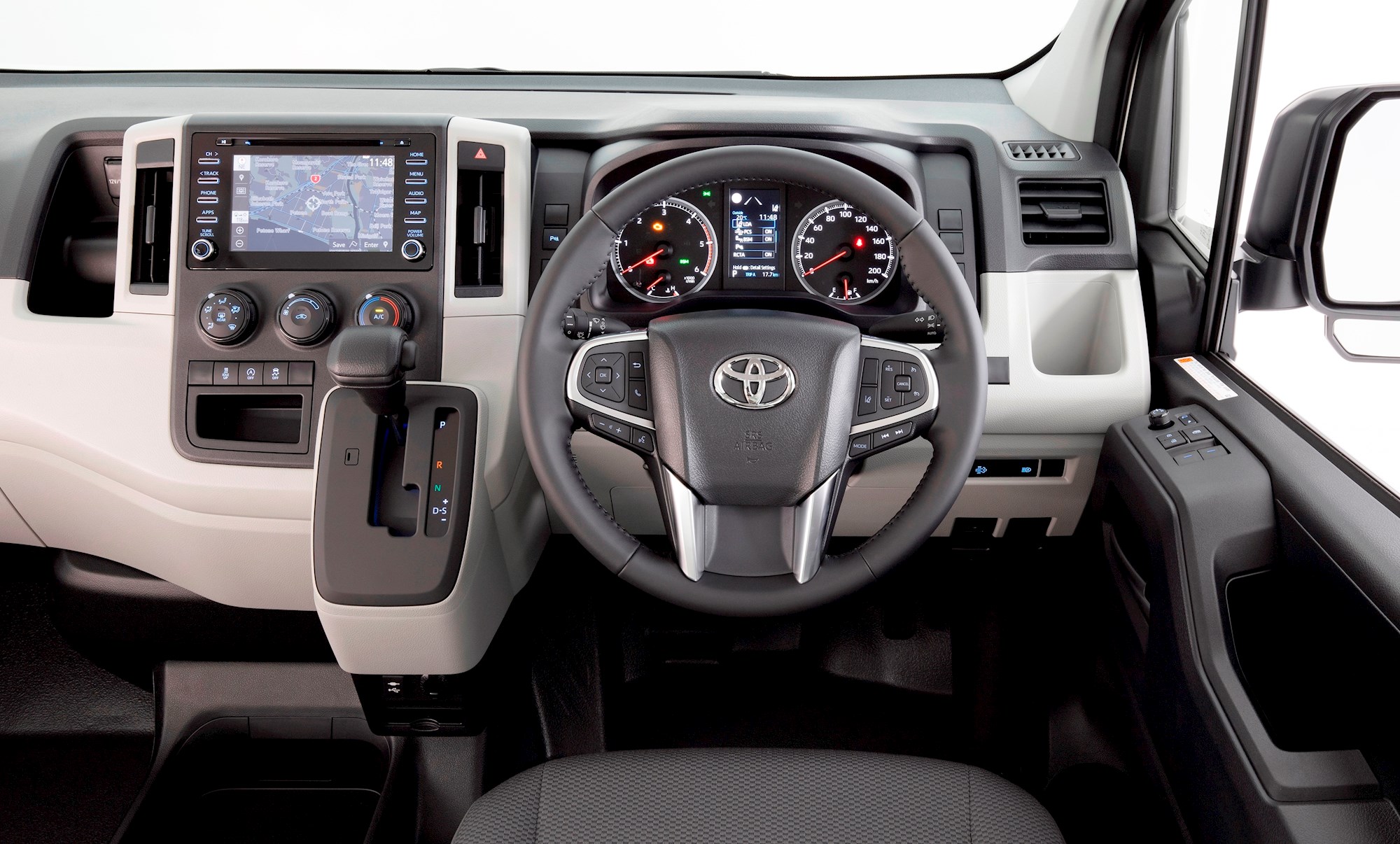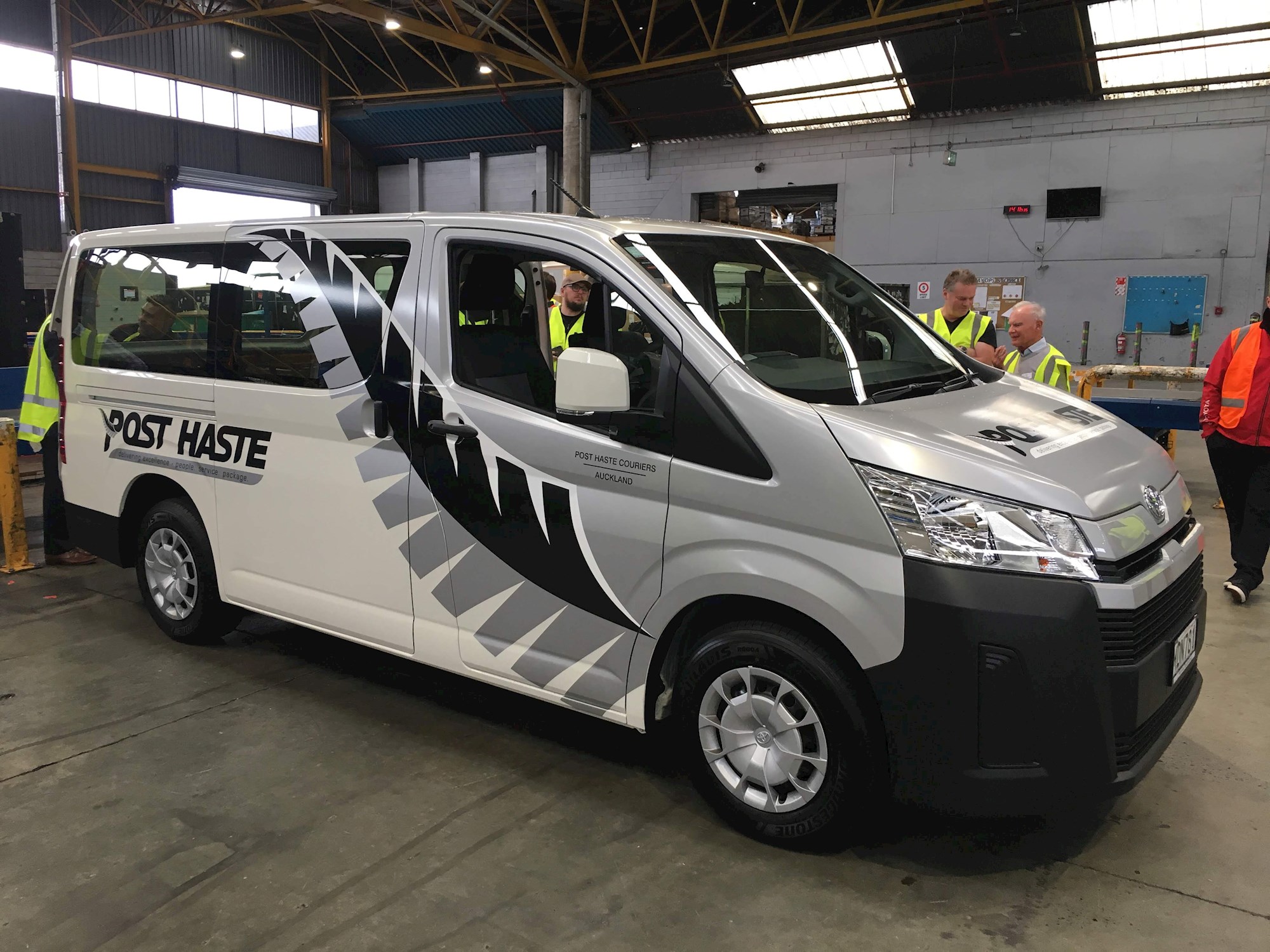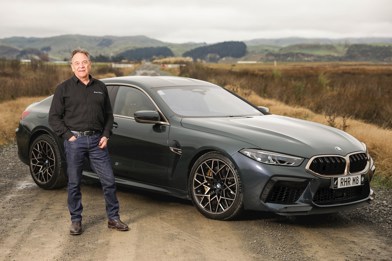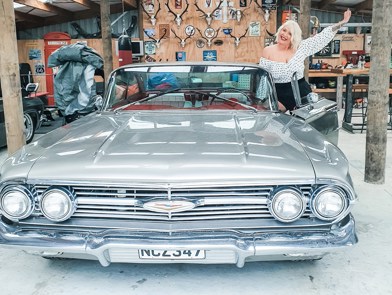Santa, presents and holiday destinations may be the key topics of conversation as the end of the year comes to an end, but not far behind is the topic and question of ‘who has a van?’ With a few weeks off, it’s often the perfect time to make the biggest move we do and shift house or home, and the peak time a year that a Facebook mate with a van becomes your best mate.
And in DRIVEN’s case, it’s the van manufacturers, with the likes of Ford’s Transit, Renault’s Trafic, VW’s Transporter and Hyundai’s iLoad at the top of mind and sales charts. Enter our number one seed, Toyota’s Hiace, NZ’s best-selling van.
Click here to view all Hiaces on Driven
It’s easy to forget or dismiss the van as little more than a mail, package or people carrier, but for past 15 years, the Hiace had largely cemented itself as a reliable, sales guarantee. Its cab-over engine design had endured, despite its cabin heat, high seat position and room-for-improvement from a safety perspective; yet it still managed to outsell the number two van on sale, Ford’s Transit, by two-to-one over previous years: 2200 sales vs 1200.
Launched in 1967, there’s a fair bit of history with Hiace too, over six generations, the most previous launched in 2005, before this new model in 2019.
With brand loyalty and longevity, Hiace is naturally a big seller to the fleet market which accounts for two-third of its sales, a shift from the 1980s when it was 50:50. Having owned 30-35 percent of the van market since 2002, the interesting fact is that one-in-four vans on our kiwi roads are Hiaces, totaling almost 80,000 units over the years. Hiace is also Toyota’s all-time best seller behind Corolla and Hilux, so there’s a lot of prestige behind the badge, even if there’s less excitement about the product itself.
But there is excitement about a new Hiace, which happens, on average, just once a decade. The new semi-bonnet model moves the engine conventionally out in front of the windscreen, and offers not just a quieter and lower cabin and better driving dynamics more akin to an SUV than a traditional van, but Toyota’s tech gear and suite of Safety Sense. Pre-collision auto emergency braking, lane departure, auto high beams, speed limiter, rear cross-traffic alert and front and rear sensors make up the package, and with mirrors pushed out for better visibility, there’s also tilt and reach adjustable steering and a height-adjustable seat; no more punishment of tall drivers.
Side-to-side, the new model is 25mm wider in the cargo loading area, out to 1775mm, and 1265mm between the wheelarches, a 135mm increase, which fits a pallet or sheet of jib. The styling is as square as a box from the rear, and in the cargo world that’s good, given function more than overrides form. With up to 1030kg of payload, up from 900kg, there’s an increase of 55-130kg of extra payload offered, while the 1500kg towing capacity is up 100kg. There’s also a new seven-inch touchscreen and start-stop, which doesn’t seem to hamper the drive.

We certainly tested it out, and in our cross-city move over the Christmas break, we managed more than 30 of the 28km round trip – more than 840km over the week with our white Hiace ZR in back-and-forth movements alone, plus a few new/old furniture pick-ups/deliveries, and the size and shape of the Hiace swallowed about 95 percent of what we had to move – in fact the only things we weren’t able to fit – a large kids’ clubhouse and trampoline, plus two couches – were put into the single removalist truck.
And all the while, the Hiace’s 2.8-litre turbo diesel, taken straight from the Hilux, powered along, full of torque on the loaded trips, and showboating its swift performance and thrifty economy on the empty return legs; Toyota claims 8.2l/100km for the model we tested and we managed 9.1l/100km of normal driving, but upped it to low-11s with our mix of loaded up and time-urgent trips.
At $46,990 as tested, the range runs from as low as $44,990 for the manual version of our test van, up to $52,990 for the minibus four-door 10-seater, with $330 capped price serving, and Toyota’s Drive Happy drive-away pricing.

It’s somewhat predictable to appreciate and thank Toyota for the loan of the van for the move – but it’s easy to see why the Hiace is such a success, with this new model already adopted by fleets such as Freightways, Post Haste and NZ Couriers.
Like any good borrowed van should, it was returned with a full tank and a refreshed amount of respect not just for the Hiace, but for the strength of the van market in NZ. With the quality of its competitors, models like the Hiace need to do a great job – it sure did one for our big move.
HIACE EVOLUTION
· 1st gen 1967-77
· 2nd gen 1977-1982
· 3rd gen 1982-1989
· 4th gen 1989-2004
· 5th gen 2005-2019
· 6th gen 2019-on













